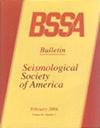德克萨斯州Midland盆地深部污水注入对前寒武纪断裂的活化作用及地震反应区的性能评价
IF 2.9
3区 地球科学
Q2 GEOCHEMISTRY & GEOPHYSICS
引用次数: 0
摘要
与油田作业相关的流体注入可以通过扰动断层强度和构造应力之间的平衡而诱发地震。由于发震断层上压力扩散的时滞和不均匀的预应力条件,诱发地震活动通常不会立即响应注入的变化。经过一个多世纪的开发,没有明显的地震活动,自2020年中期以来,米德兰盆地的活动迅速增加,包括在整个米德兰和敖德萨大都市区都有震感的5.2级地震。为了应对社会和行业的担忧,德克萨斯铁路委员会在斯坦顿和加登代尔附近建立了地震响应区,以解决深层废水处理引发地震的可能性。在这项研究中,我们根据区域和私人地震台网数据,为米德兰盆地提供了一份涵盖2020年和2021年的详细地震目录。震源是用声波测井校准的速度模型计算的。我们将地震活动的位置和时间与开发、生产和处置作业进行比较。地震活动主要发生在污水处理和采油更深的前寒武纪基底内。重新定位的地震活动性所描绘的断层在构造应力场中具有最佳的断裂定向,其震源机制与推断的断层几何形状一致。地震活动的发生和大事件的发生在时间上都与水力压裂或深部注入的变化没有直接的联系。相反,断层似乎是由于累积的深层处置而激活的。然而,我们怀疑深层处置的孔隙压力扩散和与流体注入和提取相关的远程孔隙弹性应力变化影响了最近Midland盆地地震活动性的增加。在上述两种情况下,对地震反应区的深部注废水进行调控都有可能降低Midland盆地的地震危险性。本文章由计算机程序翻译,如有差异,请以英文原文为准。
Reactivation of Precambrian Faults by Deep Wastewater Injection in Midland Basin, Texas, and Performance Evaluation of Seismic Response Areas
Fluid injection associated with oil field operations can induce earthquakes through perturbation to the balance between fault strength and tectonic stress. Induced seismicity generally does not respond immediately to changes in injection due to time-delayed diffusion of pressure and heterogeneous prestress conditions on seismogenic faults. After exploitation for over a century without significant seismicity, the Midland basin experienced a rapid increase in activity since mid-2020, including events as large as an ML 5.2 with many felt throughout the Midland and Odessa metropolitan area. In response to societal and industry concerns, the Texas Railroad Commission established Seismic Response Areas around Stanton and Gardendale, to address the possibility that deep wastewater disposal was triggering earthquakes. In this study, we present a detailed earthquake catalog covering 2020 and 2021 for the Midland basin derived from regional and private seismic network data. Hypocenters are computed using a velocity model calibrated with sonic logs. We compare the location and timing of seismicity with development, production, and disposal operations. Seismicity predominantly occurs within the Precambrian basement deeper than wastewater disposal and oil production. Faults delineated by relocated seismicity are optimally oriented for failure in the tectonic stress field, and their focal mechanisms are consistent with the inferred fault geometries. Neither the onset of seismicity nor the occurrence of large events correlates directly in time with hydraulic fracturing or changes in deep injection. Rather, faults appear to activate in response to cumulative deep disposal. However, we suspect that both pore pressure diffusion from deep disposal and remote poroelastic stress changes associated with fluid injection and extraction influence the recent increase in seismicity in the Midland basin. In either case, the regulation of deep wastewater injection in the seismic response areas has the potential to reduce the seismic hazard in the Midland basin.
求助全文
通过发布文献求助,成功后即可免费获取论文全文。
去求助
来源期刊

Bulletin of the Seismological Society of America
地学-地球化学与地球物理
CiteScore
5.80
自引率
13.30%
发文量
140
审稿时长
3 months
期刊介绍:
The Bulletin of the Seismological Society of America, commonly referred to as BSSA, (ISSN 0037-1106) is the premier journal of advanced research in earthquake seismology and related disciplines. It first appeared in 1911 and became a bimonthly in 1963. Each issue is composed of scientific papers on the various aspects of seismology, including investigation of specific earthquakes, theoretical and observational studies of seismic waves, inverse methods for determining the structure of the Earth or the dynamics of the earthquake source, seismometry, earthquake hazard and risk estimation, seismotectonics, and earthquake engineering. Special issues focus on important earthquakes or rapidly changing topics in seismology. BSSA is published by the Seismological Society of America.
 求助内容:
求助内容: 应助结果提醒方式:
应助结果提醒方式:


